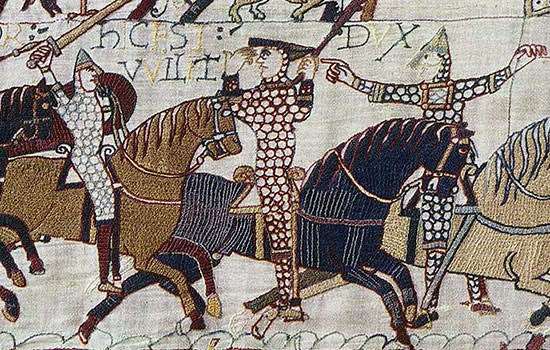UNLIMITED ACCESS TO OVER 400 HISTORIC PLACES
Live and breathe the story of England at royal castles, historic gardens, forts & defences, world-famous prehistoric sites and many others.
The Battle of Hastings was fought on 14 October 1066 between the Norman army of Duke William of Normandy and an English army under King Harold. It lasted all day, and was exceptionally bloody even by medieval standards. When Harold was eventually killed and the English fled, the way was open for William to assume the throne of England. Find out more about the events leading up to the battle, the battle itself and the location of the battlefield.

At dawn on Saturday 14 October 1066, two great armies prepared to fight for the throne of England. Read what happened at the most famous battle in English history.

Explore the site of the most famous battle in English history – one of the least altered of all medieval battlefields – and visit the abbey founded there by King William I.

Was Battle Abbey built ‘on the very spot’ where King Harold fell, or was the Battle of Hastings actually fought elsewhere? Discover the latest thinking about the battlefield’s location.

You’ve ordered all your nobles and rich men to build your fleet of ships, but how many will you need? What supplies should you take and how on earth will you get the horses on board?

Was William’s victory at the Battle of Hastings a foregone conclusion? Was King Harold really killed by an arrow in his eye? Find quick answers to these and other questions about 1066.

From the simple and affordable club to fine steel-bladed swords, we take a closer look at one of England's most famous battles and the weapons used by the Normans and Saxons.
You can see some of the best-preserved Norman architecture in England at English Heritage sites, including great castles and magnificent abbeys. Follow the links below to find out more about some of our most spectacular Norman sites.

A Norman castle was built here within the walls of a Roman fort close to the spot where William landed in England on 28 September 1066.

King William gathered his army here in 1070 after his campaign to subdue northern England. See the remains of the Norman castle and cathedral built here soon afterwards within a vast Iron Age hillfort.

Rochester Castle has one of the most spectacular keeps in England, begun in 1127. A masterpiece of Norman architecture, it is the tallest such building to survive in Europe.

See some of the most impressive late 12th century architecture in England at this vast fortress, including Henry II's magnificent great tower.

Benedictine monks from Durham founded a priory here in the 11th century to house a shrine to St Cuthbert. Surviving Norman architecture includes the famous rainbow arch.

Built by a Norman baron, Richmond has more surviving 11th-century architecture than any other castle in England.
After the Battle of Hastings, William built Battle Abbey on the site of the battle to mark his great victory and atone for the bloodshed. On Christmas day 1066 he was crowned King of England in Westminster Abbey.
The overthrow of the Saxon kingdom of England by William the Conqueror and his Norman knights was to transform the country they had conquered, from how it was organised and governed to its language and customs – and perhaps most visibly today, its architecture.

Battle Abbey was a memorial to William’s great victory – but it was also an act of penance. Find out why this great abbey was founded.

The Norman Conquest brought about the most radical change in society ever seen in England. This blog looks as some of the ways the country was transformed.

Find out how William I used an ancient centre of power, Old Sarum in Wiltshire, to set his seal on the conquest of England.

Listen to our experts discuss the impact of the Norman Conquest on England, as well as events before, during and after the Battle of Hastings.

Discover how the Norman Conquest was achieved thanks to two instruments of war previously unknown in England – the mounted, armoured knight, and the castle.

Discover how the Norman Conquest transformed the style of building in England, and learn about some of the key features of Norman architecture.

In the Bayeux Tapestry, William the Conqueror is depicted enjoying a fine feast soon after his invasion of England in 1066. What did the Normans bring to the English table?

Both before and after the Norman Conquest, everyone drank ale – from small children to adults. But under the Normans, consumption of wine in England increased...

One of the most obvious changes to English culture after 1066 occurs in people’s names. Find out how inherited surnames arrived with the Normans.

It’s often said that history is written by the winners. But in medieval stories the Normans didn’t always come out on top, as we discover from tales told about the Conquest.